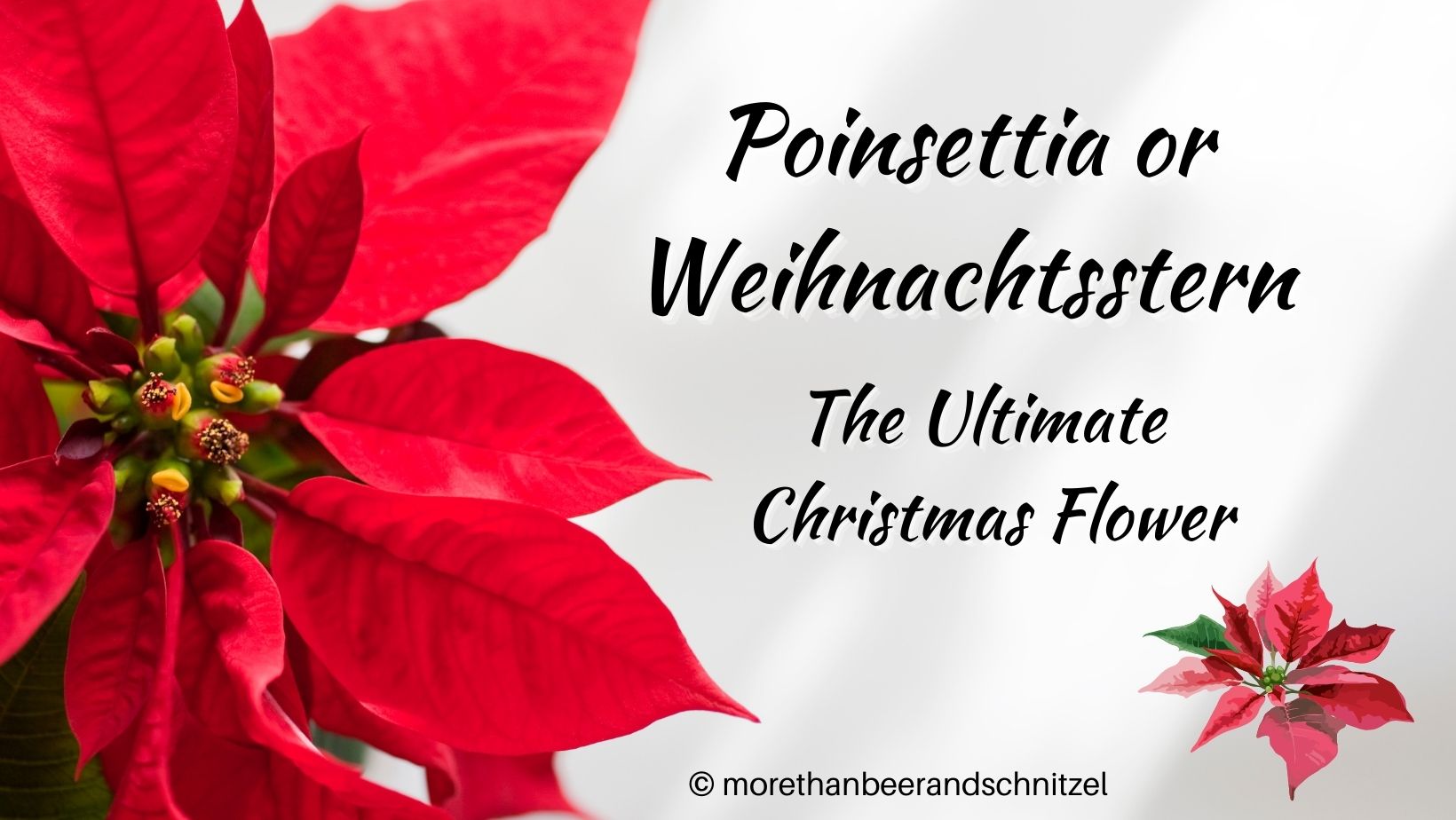December 12th is National Poinsettia Day in the US. The reason is pretty straight forward: it’s the date when Joel Roberts Poinsett died. And Poinsett is the man who brought the plant with its vibrant red leaves from Mexico to the United States. As you can tell from the name, the Poinsettia (euphorbia pulcherrima) was named after him.
The Poinsettia was imported to Europe by naturalist and explorer Alexander von Humboldt in 1804. In German, you can also call it Poinsettie, however most people call it Weihnachtsstern or Adventsstern (Christmas or Advent Star).

How the Poinsettia came to the US
Let me start with Joel Roberts Poinsett (1779-1851) after whom the plant is named, as you can easily see from its name. Poinsett was a physician, politician, diplomat, and hobby botanist. He was born into a wealthy South Carolinian family, and educated in Connecticut and Europe. In the beginning of the 19th century he traveled through Europe and Russia for several years before working as a ‘special agent’ for the US government in Chile and Argentina.
After his return to South Carolina, he was elected into the House of Representatives in 1820. He was also regarded as an expert in South American affairs.
In 1825, he was appointed first Minister to Mexico where he stayed until 1830. It is here that Poinsett came across the plant that is now known as Poinsettia. As an interested botanist, he sent seeds home to his greenhouse, probably around 1826 or 1828. How the plant was distributed from there is unclear but it was exhibited at the First Flower Show by the Pennsylvania Horticultural Society in 1829 by Colonel Robert Carr, who owned a nursery.


The plant normally grows rather tall and in Mexico it is known as “Flor de Nochebuena”, flower of the Holy Night or Christmas Eve. Other names include ‘fire plant’ and ‘painted leaf’. The connection to Christmas Eve comes from the legend that the plant first bloomed on that day. Though the red leaves are indeed leaves and not the flowers.
A legend from the 16th century tells of a poor Mexican girl who was worried that she didn’t have anything for the Christ Child on Christmas Eve. But being told that any present that comes from the heart would be acceptable she gathered weeds and made them into a bouquet. When she laid them down at the nativity scene they transformed into beautiful red flowers. And since the Poinsettias bloom (or rather have their leaves turn red) every Christmas they are known as the Christmas flower.
In the US though, the plant is named after Joel Poinsett, and has been known as Poinsettia since 1836.

How the Poinsettia became a Christmas Flower
In the beginning of the 20th century, the German immigrant family Ecke in California started growing Poinsettias commercially and marketed it as a “Weihnachtsblume” or “Weihnachtsstern” (Christmas Flower or Christmas Star).
Albert Ecke, his wife, and their four children settled near Los Angeles in 1906 and opened a ranch for milk production, fruits, vegetables, and other crops in 1911. Since Joel Roberts Poinsett had brought back the Poinsettias to the US in the late 1820s, the plant started growing wild wherever it could find advantageous conditions, a warm climate but not too much direct sunlight.
The Eckes noticed that the top leaves of the tall growing Poinsettias turned red in the late fall resembling a flowering plant. They sold them as cut flowers for Christmas.

Albert Ecke’s son, Paul Ecke, who took over the business when his father died in 1919 wanted to market the flower even more for the Christmas season and renamed it “Weihnachtsstern” – Christmas Star. The red leaves did look like a star and the new name was a great success.
In 1923, the Ecke family moved the ranch to Encinitas and Paul Ecke and his son Paul Ecke Jr. tried to cultivate Poinsettias as a potted plant but didn’t have much success. It wasn’t until the 1950s that Eckes with help from German botanists were able to grow a Poinsettia that could be sold in a pot, didn’t lose its red color, and had the full-leafed look we know today.

When Paul Ecke Jr took charge of the business in 1963, he focused on potted Poinsettias and cultivated around 30 different kinds. The Ranch also started sending cuttings instead of mother plants to nurseries around the country.
To push the Poinsettias even more as a holiday flower, Paul Ecke II sent them to TV stations to use as holiday decorations. Talkshow hosts like Johnny Carson and Bob Hope had them on their sets, you could find the plant also in the Christmas editions of women’s magazines. Before you knew it, everybody was decorating with Poinsettias.

Poinsettias today
While the Ecke Ranch now is part of Dümmen Orange (since 2013), it still holds 80-90% of the market share for Poinsettia cutting, 50% of the market share for potted Poinsettias worldwide, and 70% in the US.
Poinsettias are the most sold potted plant with about 35 million each year. The most popular variety is red with three quarters followed by white and pink Poinsettias.
Poinsettias are popular Christmas decorations in many countries; next to the real deal you can find artificial ones, ribbons, crochet projects, origami Poinsettias, coloring pages, and garlands.
Since 2002, National Poinsettia Day is celebrated on December 12th, Joel Roberts Poinsett’s death anniversary.


